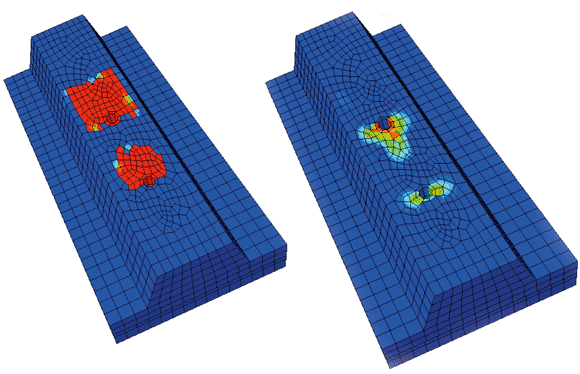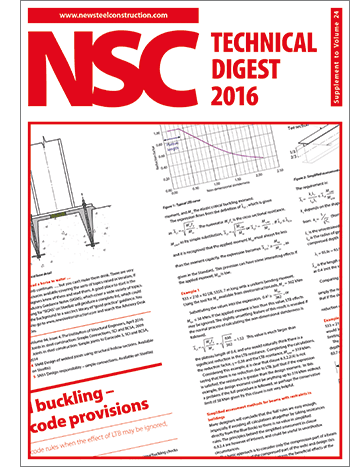Technical
AD 458: panel shear resistance
This AD relates to a bolted moment-resisting connection and the determination of the shear force in the column web panel, and in particular the selection of a lever arm as part of that calculation. In the following advice, the axial force in the beam is assumed to be zero, for simplicity.
In a moment resisting connection designed in accordance with BS EN 1993-1-8, the total tension, being the summation of the force in each bolt row, cannot exceed the resistance of the compression zone, or the shear resistance of the column web panel. If necessary, the forces in the bolt rows are reduced.
The moment resistance of the connection is then calculated by multiplying the resistances of the bolt rows (reduced if necessary) by their lever arms. The connection resistance is then compared to the applied moment.
It should be noted that in this process, the resistance of the connection is calculated.
If the resistance if the column web panel was limiting the development of tension in the bolt rows, and thus limiting the moment resistance of the connection, it may be appropriate to reinforce the column web panel.
This requires knowledge of what the applied shear force is. Although this sounds straightforward, the process described above determines the resistances, not the applied forces.
In many cases, especially if the resistance of the connection is not greatly in excess of the applied moment, it would not be too conservative to assume the applied shear force to be equal to the summation of the bolt row resistances.
If more effort is worthwhile, BS EN 1993-1-8 clause 5.3(3) specifies that the applied shear force is given by the applied moment, divided by a lever arm, z. Note that this correctly relates to the applied moment, not the moment resistance.
The lever arm, z, is determined via a forward reference to clause 6.2.7, which in turn refers to Figure 6.15. The bottom row in Table 6.15 covers bolted connections with two or more bolt rows in tension – the common case. Two alternatives are given for the lever arm z:
- The distance from the centre of the compression flange to mid-way between the two furthest bolt rows, and,
- A “more accurate” value, taken as zeq from the method described clause 6.3.3.1
Clause 6.3.3.1 covers the calculation of joint stiffness; the calculation of zeq is part of the process. It is very likely that the “more accurate” value zeq is smaller than the dimension described in (1) above, and thus would produce a higher shear force.
If designers are calculating the shear force in the web panel based on clause 5.3(3) they should be careful to use the “more accurate” value, as use of the approximate value is not always conservative. Calculation of the “more accurate” value is not without its own challenges, so designers should remember that assuming the applied shear force to be equal to the summation of the bolt row resistances will be conservative, and probably economical in terms of design effort.
Contact: SCI Advisory
Tel: 01344 636555
Email: advisory@steel-sci.com













